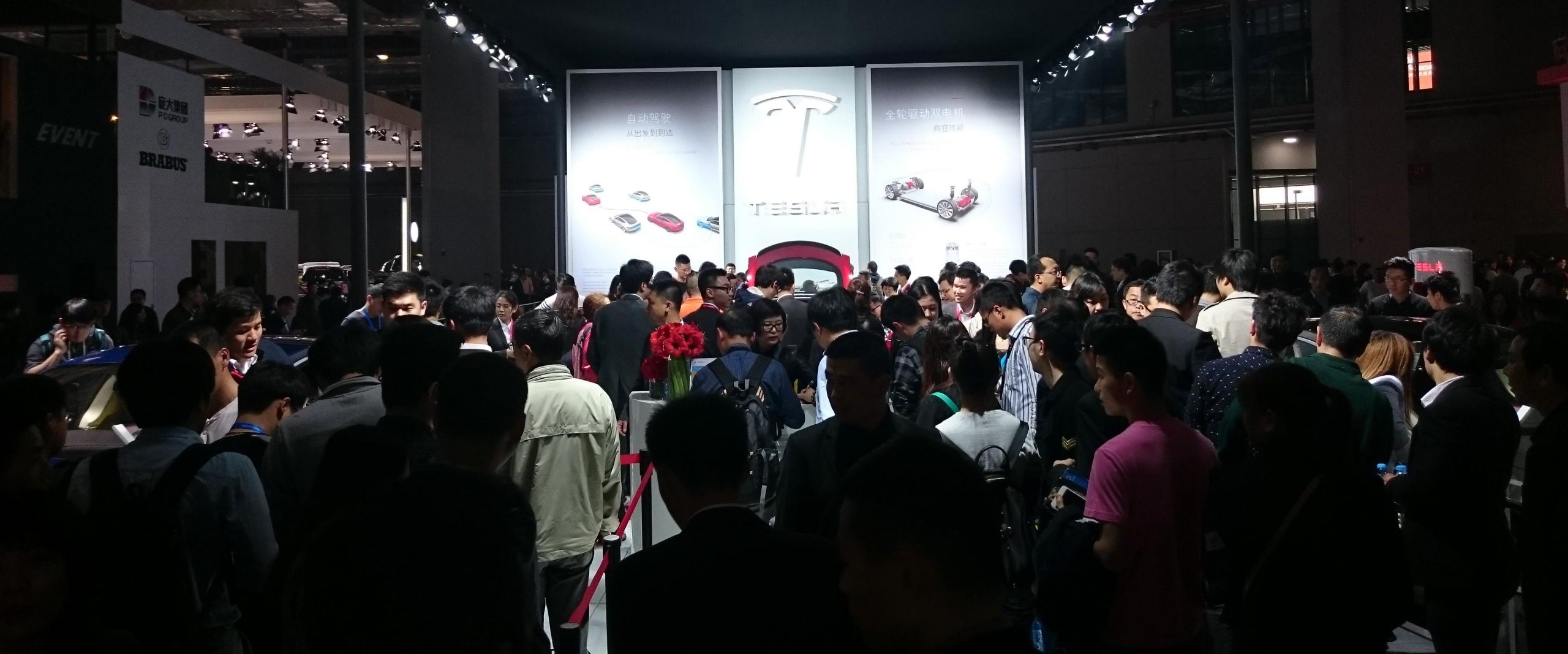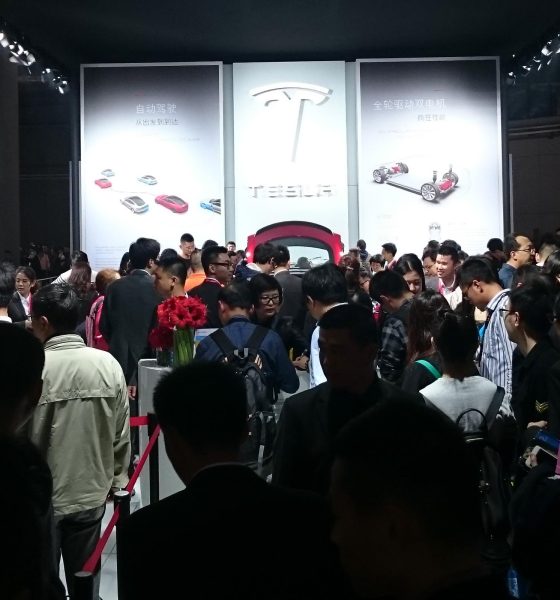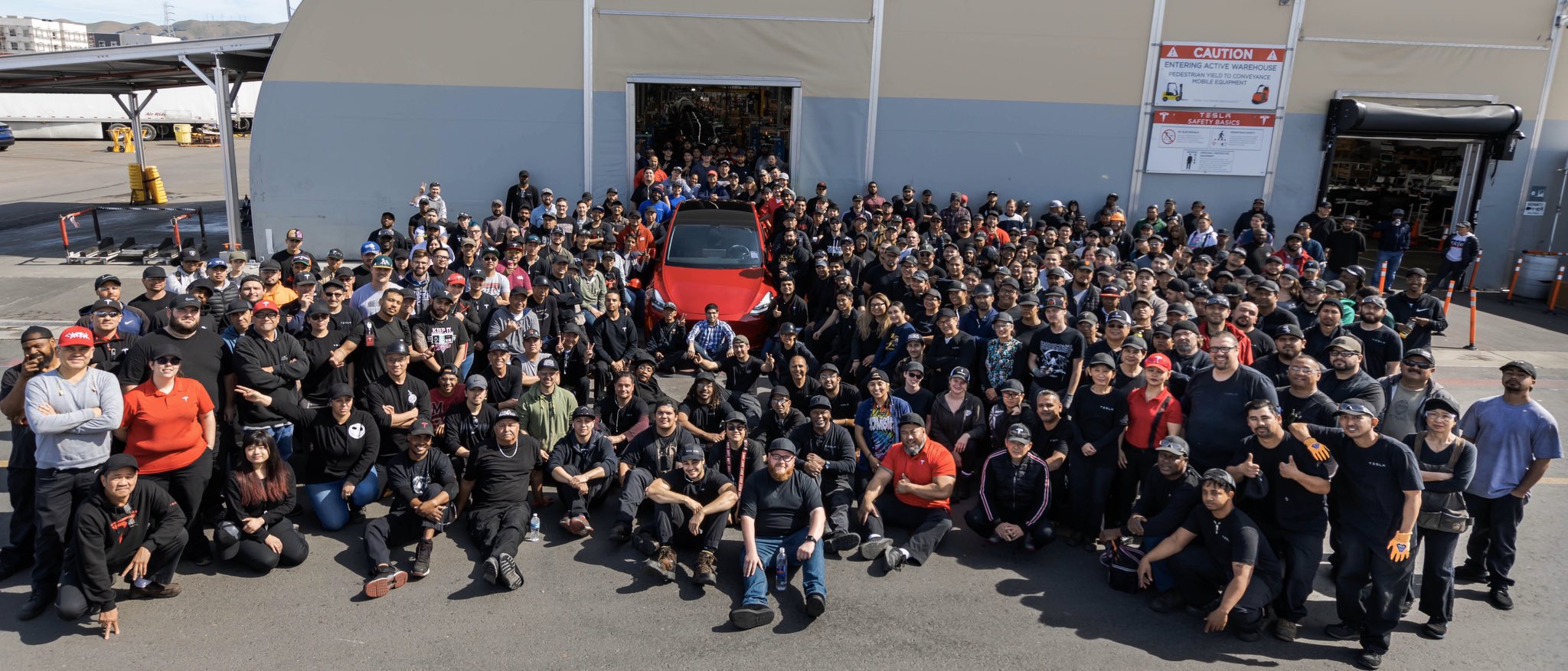

News
Tesla Fandom: Terrific or Toxic?
Tesla fans are passionate people, and it does not take a very vast amount of time to realize that. The brand itself has a certain appeal to it, and those who own the company’s most elusive products, like the 2008 Roadster, have about as much passion as those who own the $35,000 Model 3 variant. People love their Tesla products forward and backward. Usually, enthusiasm for a car company lies within the diehards that “supe” their cars up or are lifelong purchasers of the same manufacturer for a lifetime. For example, some people swear by Ford trucks, so much so that they will put a sticker on their rear windshield of a cartoon urinating on a Chevrolet logo.
The toxicity of brand loyalty lies in every camp. There is a point where loving a company you openly support comes to be too much, and your passions get in the way of being a responsible human being and considering other points of view. This is something I have noticed with some Tesla fans who are willing to attack other automakers and enthusiasts of different brands, and it seems to be based on the fact that there is a disagreement on which car company is superior.
To be clear, I think that there are a lot of amazing people in this community. I, personally, have learned a lot about Tesla vehicles in my year (so far) at Teslarati. When I came into this role as a transportation writer, I had very limited knowledge, and I considered myself to be a novice in terms of what was going on in the Tesla world. I was right.
Now, I consider myself to be an expert on the topic, but I am certainly not all-knowing, and that is okay. I continue to learn a lot from the people who have surrounded me throughout my journey as a writer, and a lot of the time, it is because many influencers in this sector are supportive, smart, and genuinely nice people.
However, there is a small selection of people in the EV community that are vicious and have let their passion for an electric car company overtake their humility. I feel that a disagreement or argument every once in a while is okay. However, having these ugly communications back and forth, on what seems to be a daily basis, is what is making a bad name for the Tesla community.
Earlier this week, Complex, a popular media and lifestyle outlet, shared the news that CEO Elon Musk had become the fourth richest man in the world. When scrolling through the replies on the Tweet that was shared, I noticed someone stating that Elon “doesn’t care about anyone but himself,” and “hasn’t done anything to help humans.”
This is where I got involved, merely stating that Elon’s mission, as described in the Tesla Master Plan, was to help humans.
This person and I traded several Tweets back and forth, and it got to the point where we both realized that minds were not going to be changed. I talked about Tesla Solar, and how it is three-times less expensive than the U.S. average, Elon’s mission as a philanthropist and entrepreneur, and I also debunked a few EV myths, like Teslas are not capable of towing or hauling.
My adversary, on the other hand, never made a relevant point. It was a discussion full of red herrings, and I decided that it was likely a waste of my time to continue. It never went past 4-5 messages to each other. The conversation simply ended, nobody was blocked, nobody was called a name, communication just halted.
A big thanks to our long-time supporters and new subscribers! Thank you.
I use this newsletter to share my thoughts on what is going on in the Tesla world. If you want to talk to me directly, you can email me or reach me on Twitter. I don’t bite, be sure to reach out!
This is not something that I see very often when writing articles about other car companies. Nor do I see it when someone with a sizeable following Tweets a supportive message about an up-and-coming car company. For example, when Lucid had stated it had achieved a 517-mile EPA estimated range rating, the comments were “Make a car first,” and “Who cares.” Things of that nature.
I understand the frustration with car companies always gunning for Tesla, but how is competition a bad thing? How is the fact that all of these other car companies vocally admitting that Tesla is the benchmark a bad thing? I can’t find the answer.
Yes, Lucid needs to produce a car for the public. Yes, 517 miles is a lot of range, but we do need to see it on a production vehicle that will be delivered to a customer. Those are all reasonable assessments, but why does Lucid need to be attacked? They’re making electric cars, not gas ones. Isn’t that what this whole thing is all about?
At one point, Tesla was the “new kid on the block.” It was a little known, scrappy company looking to make a name for itself. It had its fair share of problems, and it worked through them. Other car companies are experiencing the same things Tesla did years ago. But when Tesla was new and fresh, gas car enthusiasts were saying, “Who cares,” and “They should make a car that works first.” Here we are today, over a million vehicles later, and ramping up to a yearly production rate that far exceeded anyone’s wildest imagination.

It is almost ironic to me that the same things that came out of ICE enthusiast mouths are coming out of Tesla fan’s mouths now. The Tesla loyalty is a good thing, to an extent, but it should never outshine the fact that competition is good. It should never outshine the fact that other car companies are working on getting rid of gas-powered engines. It should never outshine the fact that the global fight against toxic carbon emissions is slowly but surely turning in our favor.
There is an old saying that goes, “If you don’t have anything nice to say, then don’t say it at all.” I think many of us should remember this from time to time. If there is a disagreement with someone that occurs online, understand that points of view are rarely going to line up identically. Understand that people are going to think your opinions are ridiculous. Lastly, realize that someone disagreeing with you is an opportunity for you to expand your mind and learn something new. A conversation with someone who holds opposite opinions or points of view is sometimes the healthiest thing for the human spirit. There is a lot of evidence that suggests being around “Yes men/women” is a bad thing. Humans grow on adversity, and there is nothing worse than being around a bunch of people who you have everything in common with. Sometimes, it is helpful to mix it up and hear things that you don’t necessarily agree with.
So next time you catch someone online, and they’re saying something that seems to challenge your beliefs, take a minute and think about what they are saying. Does it make sense, or is their idea full of misleading and incorrect information? In the case of the short conversation I had earlier this week, I recognized that what this person was saying was false based on Elon’s merit and what he has done for the world thus far in his career.
Don’t block or put someone on blast because they said something controversial to you. I would imagine a healthier way to end the conversation is to simply say, “I disagree with you, but I respect your opinion.” Calling someone names is childish, and stooping to the level they are taking if they begin calling you names makes you no better than they are. There’s a reason that it is called “taking the high road.”
Tesla’s mission is about sustaining life as we know it on Earth, or perhaps, on Mars. However, if we do not learn to cherish and respect views that differ from our own, our civilization will never make it. Breaking through boundaries and listening to points of view that are not necessarily on par with what we believe is sometimes the best thing for us. Even if you leave a conversation thinking, “That person has no clue what they’re talking about,” there are a series of benefits. You walked away respectfully. You learned that you and that person aren’t compatible. Lastly, you realized that there are people in the world that are the polar opposite to you. Those are just a few that come to mind.
I find it extremely important, especially at such a trying time in our world, that we respect one another as best as we can. Whether you’re a Tesla fan, Rivian fan, or a Lucid fan, be kind to one another. We are all in this together, and the push toward sustainable transportation is growing due to the efforts of each and every one of the companies that decided to manufacture EVs.
Please consider Subscribing and joining me next week as I go ‘Beyond the News’

Elon Musk
Elon Musk and Tesla AI Director share insights after empty driver seat Robotaxi rides
The executives’ unoccupied tests hint at the rapid progress of Tesla’s unsupervised Robotaxi efforts.

Tesla CEO Elon Musk and AI Director Ashok Elluswamy celebrated Christmas Eve by sharing personal experiences with Robotaxi vehicles that had no safety monitor or occupant in the driver’s seat. Musk described the system’s “perfect driving” around Austin, while Elluswamy posted video from the back seat, calling it “an amazing experience.”
The executives’ unoccupied tests hint at the rapid progress of Tesla’s unsupervised Robotaxi efforts.
Elon and Ashok’s firsthand Robotaxi insights
Prior to Musk and the Tesla AI Director’s posts, sightings of unmanned Teslas navigating public roads were widely shared on social media. One such vehicle was spotted in Austin, Texas, which Elon Musk acknowleged by stating that “Testing is underway with no occupants in the car.”
Based on his Christmas Eve post, Musk seemed to have tested an unmanned Tesla himself. “A Tesla with no safety monitor in the car and me sitting in the passenger seat took me all around Austin on Sunday with perfect driving,” Musk wrote in his post.
Elluswamy responded with a 2-minute video showing himself in the rear of an unmanned Tesla. The video featured the vehicle’s empty front seats, as well as its smooth handling through real-world traffic. He captioned his video with the words, “It’s an amazing experience!”
Towards Unsupervised operations
During an xAI Hackathon earlier this month, Elon Musk mentioned that Tesla owed be removing Safety Monitors from its Robotaxis in Austin in just three weeks. “Unsupervised is pretty much solved at this point. So there will be Tesla Robotaxis operating in Austin with no one in them. Not even anyone in the passenger seat in about three weeks,” he said. Musk echoed similar estimates at the 2025 Annual Shareholder Meeting and the Q3 2025 earnings call.
Considering the insights that were posted Musk and Elluswamy, it does appear that Tesla is working hard towards operating its Robotaxis with no safety monitors. This is quite impressive considering that the service was launched just earlier this year.
Elon Musk
Starlink passes 9 million active customers just weeks after hitting 8 million
The milestone highlights the accelerating growth of Starlink, which has now been adding over 20,000 new users per day.

SpaceX’s Starlink satellite internet service has continued its rapid global expansion, surpassing 9 million active customers just weeks after crossing the 8 million mark.
The milestone highlights the accelerating growth of Starlink, which has now been adding over 20,000 new users per day.
9 million customers
In a post on X, SpaceX stated that Starlink now serves over 9 million active users across 155 countries, territories, and markets. The company reached 8 million customers in early November, meaning it added roughly 1 million subscribers in under seven weeks, or about 21,275 new users on average per day.
“Starlink is connecting more than 9M active customers with high-speed internet across 155 countries, territories, and many other markets,” Starlink wrote in a post on its official X account. SpaceX President Gwynne Shotwell also celebrated the milestone on X. “A huge thank you to all of our customers and congrats to the Starlink team for such an incredible product,” she wrote.
That growth rate reflects both rising demand for broadband in underserved regions and Starlink’s expanding satellite constellation, which now includes more than 9,000 low-Earth-orbit satellites designed to deliver high-speed, low-latency internet worldwide.
Starlink’s momentum
Starlink’s momentum has been building up. SpaceX reported 4.6 million Starlink customers in December 2024, followed by 7 million by August 2025, and 8 million customers in November. Independent data also suggests Starlink usage is rising sharply, with Cloudflare reporting that global web traffic from Starlink users more than doubled in 2025, as noted in an Insider report.
Starlink’s momentum is increasingly tied to SpaceX’s broader financial outlook. Elon Musk has said the satellite network is “by far” the company’s largest revenue driver, and reports suggest SpaceX may be positioning itself for an initial public offering as soon as next year, with valuations estimated as high as $1.5 trillion. Musk has also suggested in the past that Starlink could have its own IPO in the future.
News
NVIDIA Director of Robotics: Tesla FSD v14 is the first AI to pass the “Physical Turing Test”
After testing FSD v14, Fan stated that his experience with FSD felt magical at first, but it soon started to feel like a routine.

NVIDIA Director of Robotics Jim Fan has praised Tesla’s Full Self-Driving (Supervised) v14 as the first AI to pass what he described as a “Physical Turing Test.”
After testing FSD v14, Fan stated that his experience with FSD felt magical at first, but it soon started to feel like a routine. And just like smartphones today, removing it now would “actively hurt.”
Jim Fan’s hands-on FSD v14 impressions
Fan, a leading researcher in embodied AI who is currently solving Physical AI at NVIDIA and spearheading the company’s Project GR00T initiative, noted that he actually was late to the Tesla game. He was, however, one of the first to try out FSD v14.
“I was very late to own a Tesla but among the earliest to try out FSD v14. It’s perhaps the first time I experience an AI that passes the Physical Turing Test: after a long day at work, you press a button, lay back, and couldn’t tell if a neural net or a human drove you home,” Fan wrote in a post on X.
Fan added: “Despite knowing exactly how robot learning works, I still find it magical watching the steering wheel turn by itself. First it feels surreal, next it becomes routine. Then, like the smartphone, taking it away actively hurts. This is how humanity gets rewired and glued to god-like technologies.”
The Physical Turing Test
The original Turing Test was conceived by Alan Turing in 1950, and it was aimed at determining if a machine could exhibit behavior that is equivalent to or indistinguishable from a human. By focusing on text-based conversations, the original Turing Test set a high bar for natural language processing and machine learning.
This test has been passed by today’s large language models. However, the capability to converse in a humanlike manner is a completely different challenge from performing real-world problem-solving or physical interactions. Thus, Fan introduced the Physical Turing Test, which challenges AI systems to demonstrate intelligence through physical actions.
Based on Fan’s comments, Tesla has demonstrated these intelligent physical actions with FSD v14. Elon Musk agreed with the NVIDIA executive, stating in a post on X that with FSD v14, “you can sense the sentience maturing.” Musk also praised Tesla AI, calling it the best “real-world AI” today.








